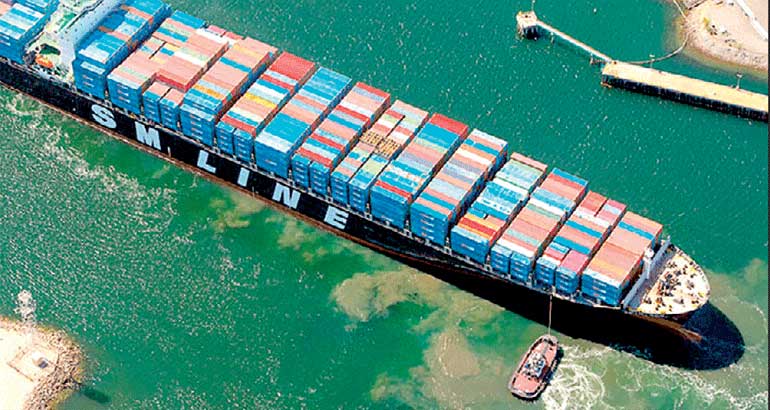Monday Apr 21, 2025
Monday Apr 21, 2025
Monday, 12 September 2022 02:45 - - {{hitsCtrl.values.hits}}

markets continue their downward spiral, with spot rates now largely falling below $ 4,000 per FEU on routes to the US west coast.
While Chinese emerging carrier on the trade, BAL Container Line, reportedly dragged the floor down to $ 3,700 per FEU last week, its mainstream competitors were still quoting around $ 4,500 for shipping a 40 ft. container from Chinese base ports to Long Beach or Los Angeles.
However, more carriers seem to have followed suit, leading to yet another sharp mark-down in the market.
South Korean carrier SM Line is charging $ 3,700 per FEU, including surcharges, for its vessel SM Portland expected to depart from China’s Yantian on 9 September and arrive in Long Beach in 18 days, according to vessel booking data.
Rates promoted by its Taiwanese rival Yang Ming this week are slightly lower, at $ 3,650 per FEU for the company’s China-USWC services.
The offers made by carriers in the Ocean Alliance led by CMA CGM and Cosco Shipping stand at around $ 4,000, but are negotiable given large booking volume, according to forwarding sources.
Drewry’s Hong Kong-Los Angeles container rate benchmark reported a startling 18.1% slump this week to $ 4,052 per FEU. It is the steepest week-on-week decline since the index began to head south in March this year, much worse than the previous record of a 7.4% fall reported on 17 August.
Overall, the index tanked 49.1% from the corresponding week in the past year.
This followed the largest single week dip — 8% — of the widely quoted Shanghai Containerised Freight Index last week, with rates recorded on Asia-USWC route down 11.2%.
“It’s a race to the bottom and I don’t think there is necessarily a floor as long as capacity utilisation does not recover,” said Linerlytica analyst Hua Joo Tan, adding that spot rates to USWC ports could soon plunge below $ 3,000 FEU. “Temporary sailing omissions will not help unless capacity is actually removed.”
In a report this week, the container shipping consultancy said that carriers are cutting rates to protect their market share as they have capitulated under mounting market pressure.
“Supply chain bottlenecks are no long providing price support as demand is clearly easing well ahead of the traditional start of the slack season in October.”
The current level of spot rates is approaching the breakeven point of even some larger carriers, said a Shenzhen-based freight forwarder.
“The market will only stabilise until those can’t afford to continue the operation are squeezed out of the competition.”
Discover Kapruka, the leading online shopping platform in Sri Lanka, where you can conveniently send Gifts and Flowers to your loved ones for any event including Valentine ’s Day. Explore a wide range of popular Shopping Categories on Kapruka, including Toys, Groceries, Electronics, Birthday Cakes, Fruits, Chocolates, Flower Bouquets, Clothing, Watches, Lingerie, Gift Sets and Jewellery. Also if you’re interested in selling with Kapruka, Partner Central by Kapruka is the best solution to start with. Moreover, through Kapruka Global Shop, you can also enjoy the convenience of purchasing products from renowned platforms like Amazon and eBay and have them delivered to Sri Lanka.
Discover Kapruka, the leading online shopping platform in Sri Lanka, where you can conveniently send Gifts and Flowers to your loved ones for any event including Valentine ’s Day. Explore a wide range of popular Shopping Categories on Kapruka, including Toys, Groceries, Electronics, Birthday Cakes, Fruits, Chocolates, Flower Bouquets, Clothing, Watches, Lingerie, Gift Sets and Jewellery. Also if you’re interested in selling with Kapruka, Partner Central by Kapruka is the best solution to start with. Moreover, through Kapruka Global Shop, you can also enjoy the convenience of purchasing products from renowned platforms like Amazon and eBay and have them delivered to Sri Lanka.